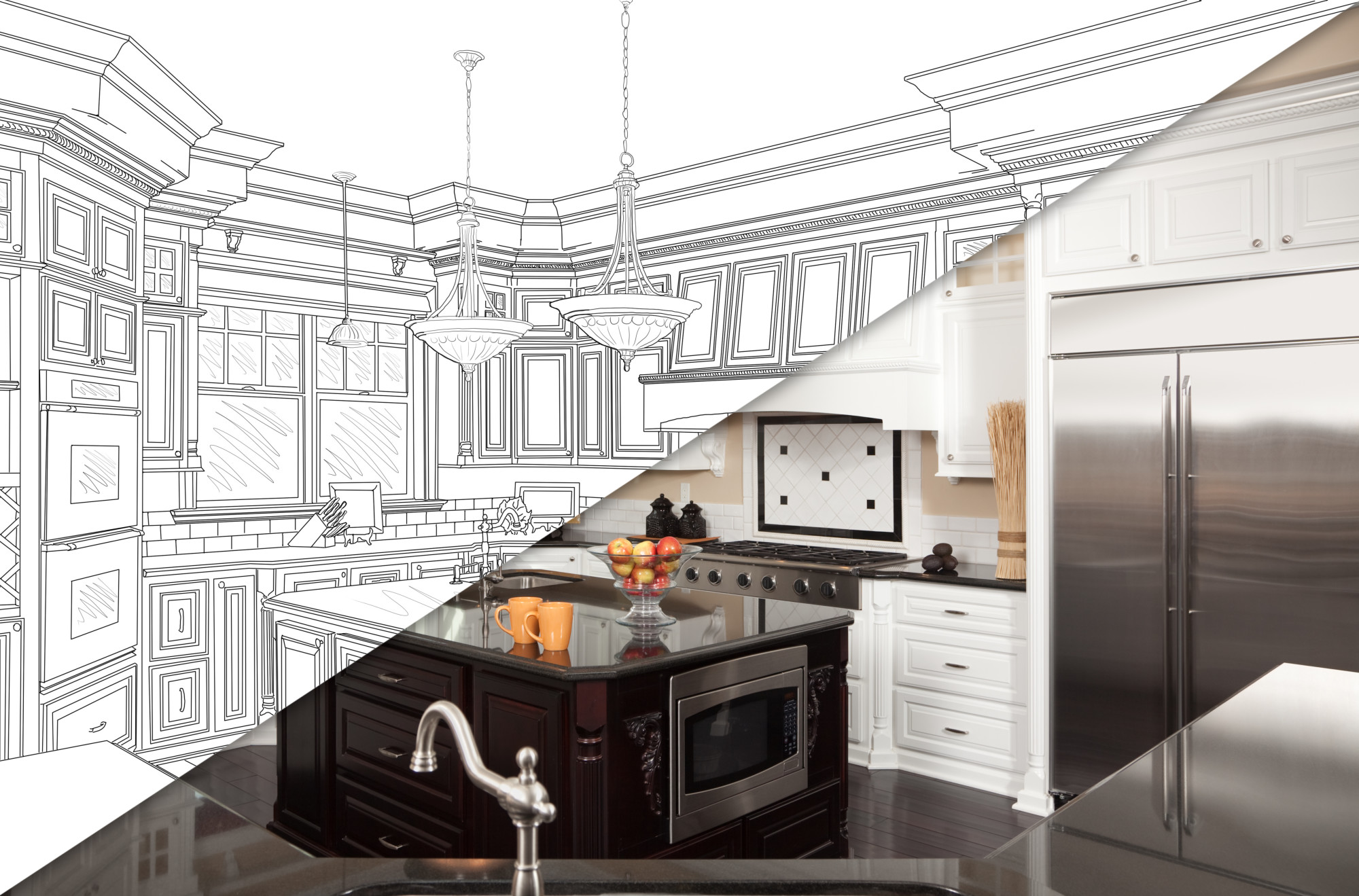Remodeling a kitchen is an exciting yet complex project that involves several stages from initial planning to final execution. The process begins with budgeting, where you determine how much you are willing to spend, guiding the scope of your project. Gathering inspiration from magazines, websites, and social media helps in identifying styles, colors, and layouts that appeal to you. Hiring a professional kitchen designer or architect can assist in planning the layout and ensuring functionality, focusing on the work triangle—the distance between the stove, sink, and refrigerator—for efficient workflow. During the design phase, you'll select materials for countertops, cabinets, flooring, and backsplashes, considering durability, maintenance, and aesthetics. Deciding on energy-efficient appliances with the necessary features is also crucial.
Before construction begins, detailed planning and precise measurements of the kitchen space are essential. Obtaining necessary building permits and establishing a realistic timeline that accounts for potential delays will help keep the project on track. Choosing the right contractor involves researching, interviewing several candidates, checking references, and reviewing previous work. Once a contractor is selected, a detailed contract outlining the scope of work, timeline, and payment schedule should be signed.

Demolition marks the beginning of the physical work, where the kitchen space is cleared of all items, including cabinets and appliances. Safety measures such as turning off water, gas, and electricity are crucial during this phase. Structural changes, if any, involve framing new walls and updating plumbing, followed by electrical work to install new wiring, outlets, and lighting according to the new design.
The construction phase continues with installing new flooring, cabinets, and countertops. Cabinets need to be level and securely attached, while countertops are measured and installed with precision. Adding a backsplash enhances the kitchen’s style and protects the walls from splashes. Fixtures and appliances come next, including task and ambient lighting, plumbing fixtures like sinks and faucets, and new appliances.
As the remodel nears completion, final touches like painting walls, installing trim and moldings, and adding hardware to cabinets and drawers are done. Post-construction involves a thorough cleanup to remove construction debris and a deep cleaning to eliminate dust and residue. A final walkthrough with the contractor ensures everything is completed to satisfaction, and any remaining tasks or touch-ups are addressed.
Once the remodel is complete, you can start moving in your kitchen items and enjoy the newly remodeled space. Clear communication with your contractor throughout the project, flexibility to handle unexpected issues and delays, and setting up a temporary kitchen in another part of your home can all contribute to a smooth remodeling process. Understanding these stages and preparing accordingly will help ensure a successful kitchen remodel that enhances both the functionality and aesthetics of your home.
